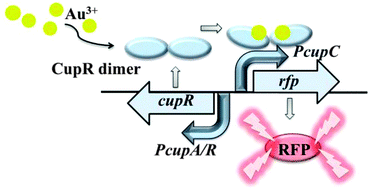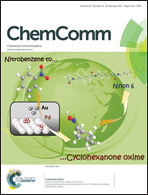A fluorescence-based microbial sensor for the selective detection of gold†
Abstract
This study presents a fluorescence-based microbial sensor for the detection of metal ions as a novel analytical tool for environmental applications. Our results demonstrate the effectiveness of whole-cell sensors in the selective detection of gold ions. Two heavy-metal-tolerant proteobacteria, Cupriavidus metallidurans and Ralstonia eutropha, were examined and showed great specificity. This work highlights the potential of employing engineered microbial strains as robust analytical tools.


 Please wait while we load your content...
Please wait while we load your content...